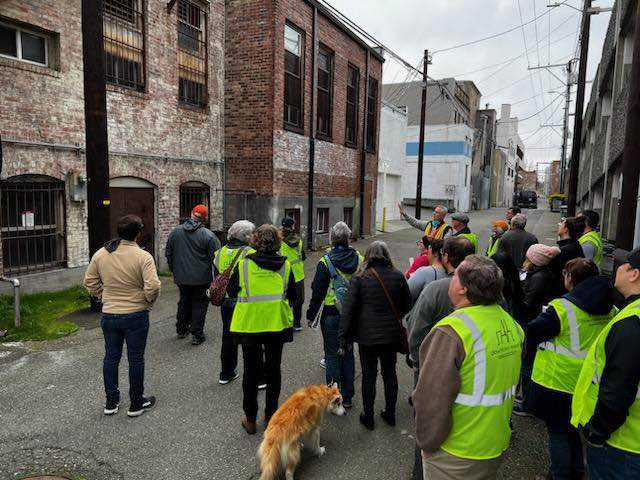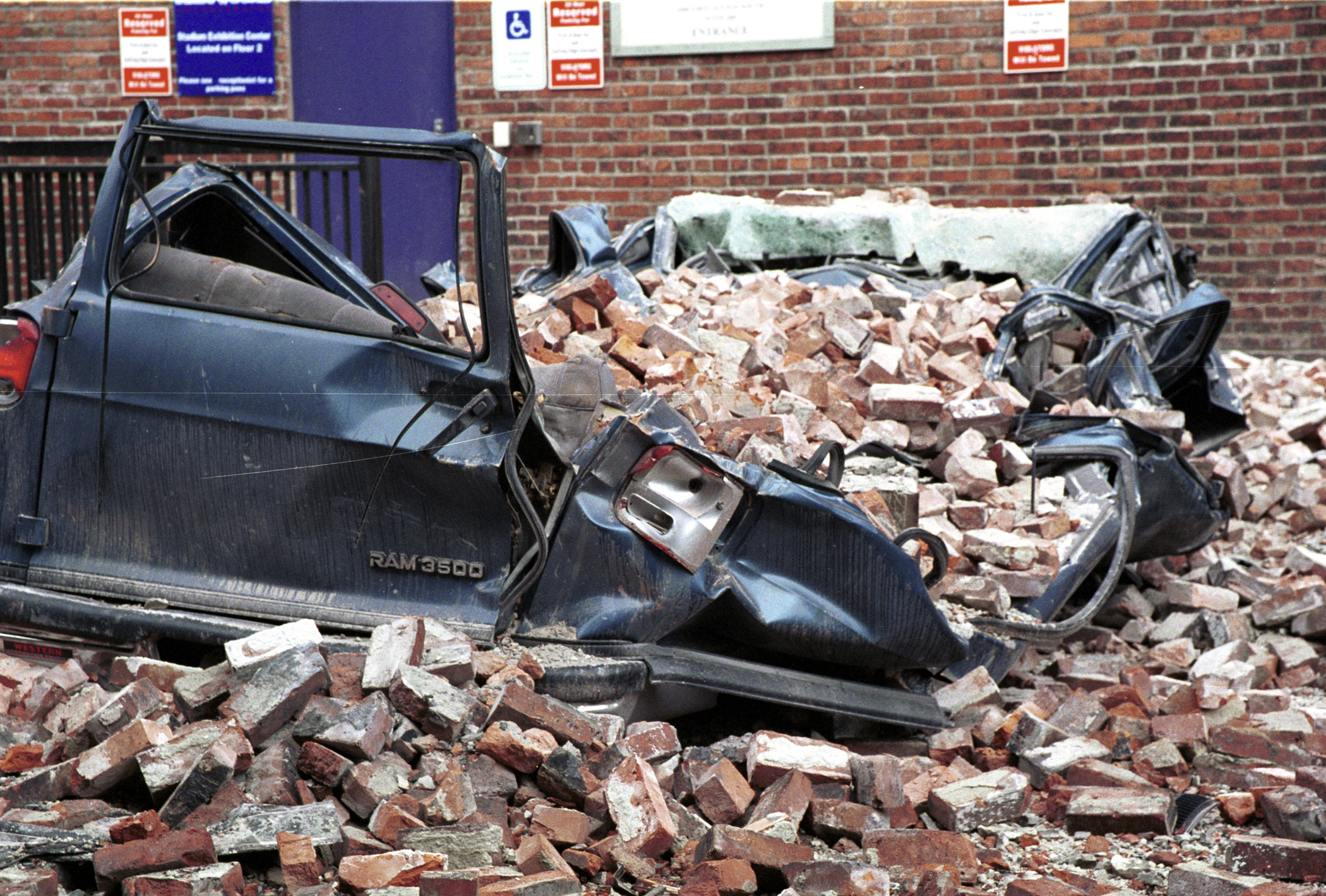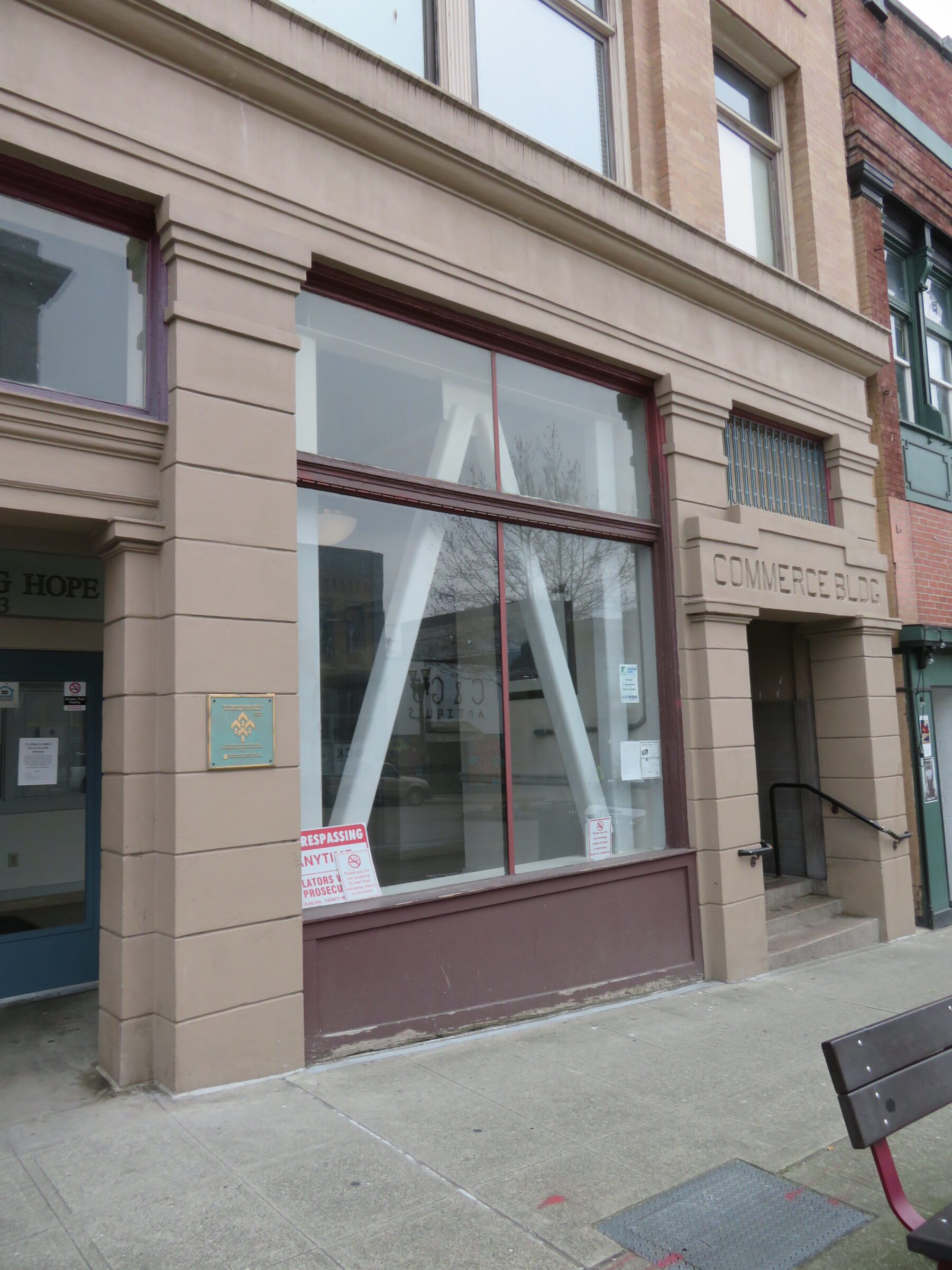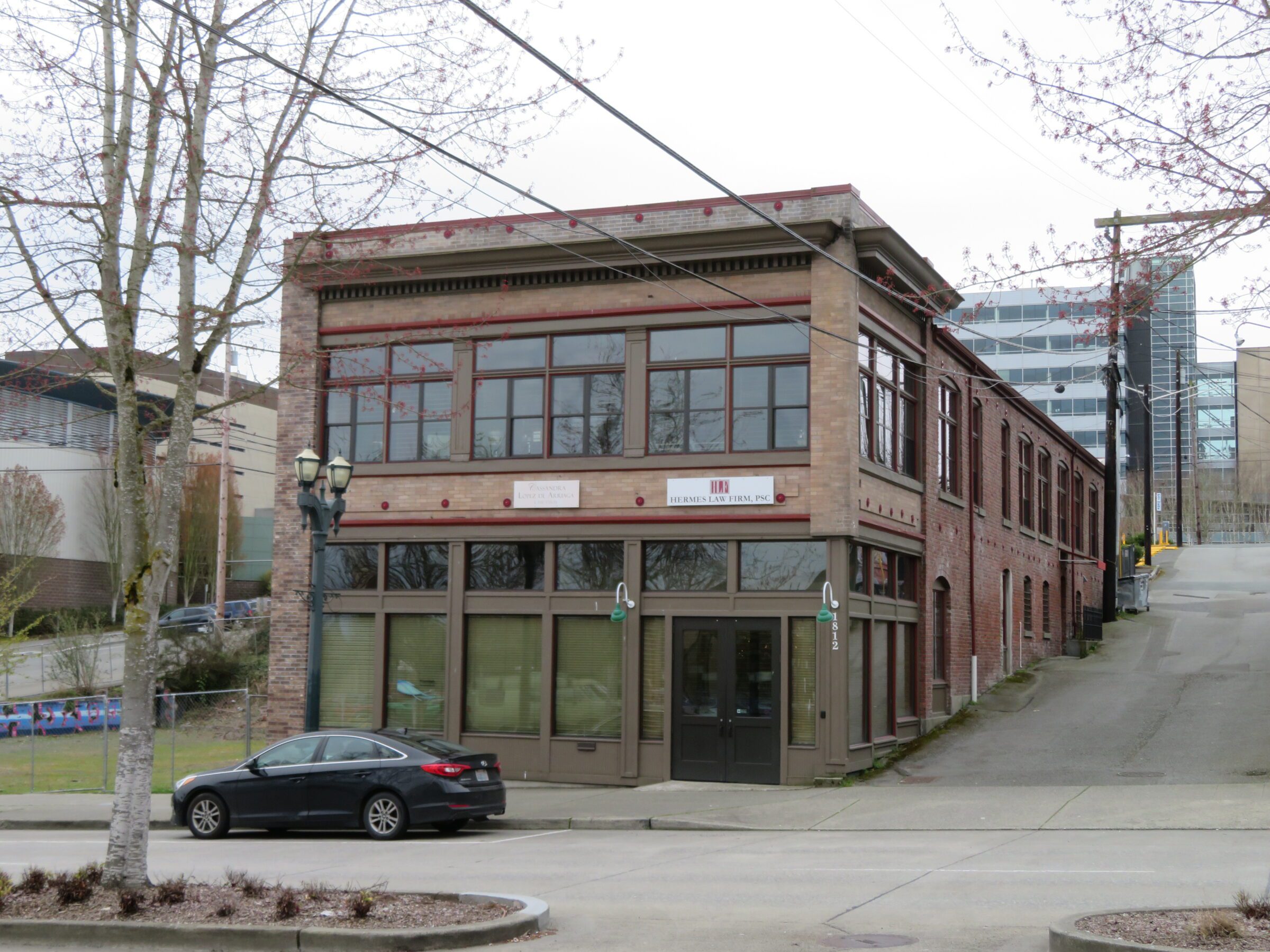Unreinforced Masonry Buildings and Earthquakes: What Can We Do About Them?

Photo: Volunteers gathered for a “sample building survey” to learn what features to look for. All photos courtesy of DAHP and EMD.
By Mark Pierepiekarz, Emergency Management Division Outreach Coordinator; Michelle Thompson, Department of Archaeology & Historic Preservation CLG Coordinator & Main Street Design Specialist; Madison Vazquez, Downtown Everett Association Marketing Manager
Unreinforced masonry (URM) buildings have the potential to experience damage or collapse during an earthquake, creating a safety risk to building occupants, the public, and the community itself. There are thousands of URM structures in service in Washington State. Historic preservation groups have long recognized that seismic improvement of these buildings represents an opportunity in revitalizing and maintaining thriving communities statewide. This article profiles a unique collaboration between the historic preservation and emergency management communities in collecting and sharing URM building data to inform priority risk mitigation actions.
Building on previous efforts to address URM building risks, a multiagency URM workgroup was formed in 2022 with the goal of a statewide URM building database with a dedicated user portal. Once completed, stakeholders and the public will have access to unique data for each URM building. This information can be used to assess seismic risks, improve planning efforts, and connect stakeholders to mitigation funding resources. The URM workgroup member agencies have applied for funding to develop and maintain a user-friendly portal and are seeking funding to complete a statewide URM building database.
The URM workgroup outreach led to a partnership with the Washington Trust for Historic Preservation and the Washington State Main Street Program on data collection for URM buildings at the community level. The group agreed to test an approach for data collection by trained local non-technical volunteers (followed by data validation by technical staff) in one community, with a view for a later statewide rollout. The aim was to identify and record features that can indicate that a building is either seismically vulnerable or has some level of earthquake-ready retrofitting. This volunteer-led approach can be applied by other Main Street organizations to complete URM building inventories in their communities.


Everett was a strategic choice for this pilot initiative thanks to the availability of pre-existing building data, its strong historic preservation connections, and demonstrated community buy-in. The Downtown Everett Association (DEA), which hosted the event, has been a designated Main Street Community since 2021. The organization has existed as program manager for Everett’s Downtown Improvement District (DID) since 1996, with access to basic building information, including the year built. Thanks to this existing database, Everett already knew that 237 of their buildings are more than 50 years old and were able to quickly identify 183 of those as potential URMs.
Over the four months leading up to the survey, DEA convened local meetings to finalize a short list of suspected URM buildings, locate a training room venue, and communicate with local stakeholders and building owners. DEA staff tapped into a variety of building data resources including the City of Everett Planning Department, the historical commission, and historic societies throughout Snohomish County to enrich the depth of available information. At the same time, two state agencies, the Department of Archaeology and Historic Preservation (DAHP) and the Emergency Management Division (EMD), designed and tested a data collection survey smartphone app and developed a training module to help volunteers quickly understand and recognize important URM building features and be successful and safe during the survey.
According to DEA Marketing Manager Madison Vazquez, “As with any project taken on by a Main Street Community, costs and logistics needed to be carefully considered before undertaking the pilot URM survey. DEA kept expenses to a minimum and utilized staff time to prepare data, recruit volunteers, and plan the volunteer event, but some communities may require additional support from volunteers, interns, or even contractors to prepare. Volunteer architects assisted with pre-screening the building prior to the event. DEA reserved a volunteer training room in a city-owned facility for free. DEA already owned enough high-visibility vests to provide at least one vest per volunteer team, and lanyards were purchased to ensure every volunteer could be identified as part of the event.”
Ahead of the volunteer event, DEA developed a volunteer package with relevant known building data, as well as maps of the block(s) they would be surveying. Property owners were emailed in advance of the event with information about the project’s intent. Volunteers were provided with a printed letter in case they encountered in-person questions from businesses or property owners.
With 186 buildings in downtown Everett earmarked for URM review, a systematic division into sections and a calculated volunteer requirement were established. Estimating 20 minutes per building, surveys would take roughly 60 hours to complete. The DEA would need a minimum of 16 pairs of volunteers to complete surveys of all potential URMs during the event.

The recruitment of volunteers was a multi-faceted effort, tapping into social media and email platforms, emergency management networks, owned newsletters, and local blogs. Of the 35 registered volunteers, more than 30 attended the event—a mix of neighbors, DEA board members, DAHP, and regional emergency management staff and volunteers interested in historic preservation and public safety. From 9:00 to 10:00 am, Mark Pierepiekarz of EMD conducted a training on identifying URM buildings and using the Survey123 app created by DAHP. Volunteers were provided packets containing details about their assigned buildings before heading into the field for a “sample building survey” where an EMD trainer pointed out features to look for when surveying buildings. By the end of the one-day event, surveys for 130 out of 186 suspected URM buildings were successfully completed. The volunteer feedback following the pilot survey was overwhelmingly positive, validating the careful preparation to make sure that the event and volunteer experience were successful.
The success of the URM building survey in downtown Everett stands as a testament to the power of community involvement in historic preservation. This effort contributes valuable data to enhance public safety measures and preserve our historic buildings in the face of future seismic events. As we celebrate the work in Everett, we encourage Main Streets across Washington to consider launching similar initiatives in your communities. As strong volunteer networks in historic downtowns, Main Street communities are poised to make a significant impact on statewide efforts to better prepare for potential future disasters. The data collected through URM surveys will help local and state emergency management teams understand the extent of safety risks across the state, and a complete, accurate statewide database of URMs will allow EMD and DAHP to work with legislators to explore potential funding opportunities for risk mitigation.
How to do a Seismic Inventory in Your Community
Following the Everett pilot, a basic checklist on ”How to conduct an inventory” checklist was drafted to aid in planning and completing similar building surveys in the future (see sidebar). Communities with unretrofitted URM structures can follow this approach and conduct a survey in their own community, contribute to completing the overall database, and ultimately benefit by having access to information that will help them prioritize mitigation actions and plan for accessing seismic mitigation funding.
For those inspired to contribute to these efforts, the Downtown Everett Association is happy to provide examples of their work to help you get started. Email Madison at ma*****@do***************.org to request copies of the letter to property owners, volunteer packet, property database, and maps.
Communities interested in undertaking a URM survey of their own might secure funding with a Certified Local Government (CLG) grant in communities that participate in the CLG Program. Funding may also be obtained through a Federal Emergency Management (FEMA) grant in those communities with a Hazard Mitigation Plan. For more information, contact DAHP CLG Coordinator Michelle Thompson at Mi***************@da**.gov.
A community group considering undertaking a building survey may have the following initial questions:
- Are we located in a seismic hazard area?
- Are there URM buildings serving our community?
- Which URM buildings are the highest priority in our community?
- What do we need to begin collecting building data?
This “How to conduct an inventory” checklist provides guidance in planning for a URM building survey:
1. Pre-startup questions
a. What is known about our URM buildings?
b. What are our goals?
c. Who are our local partners?
d. Who can host and organize the survey?
e. Will funding be needed?
2. Startup efforts
a. Build a local team
b. Define geographic scope and priorities
c. Learn from other communities
d. Outreach for local support
e. Develop a budget
3. Preparation
a. Organize pre-existing URM building data
b. Verify the Survey123 phone app and data hosting
c. Set survey date and solicit volunteers
d. Organize training materials and classroom venue
4. Data collection
a. Pre-event: screen out non-URM buildings before survey
b. Assign survey areas
c. Conduct a safety training session
d. Conduct surveys
e. Post-event: review building data for accuracy
5. Using survey results
a. Review results and engage with local stakeholders on the next step
